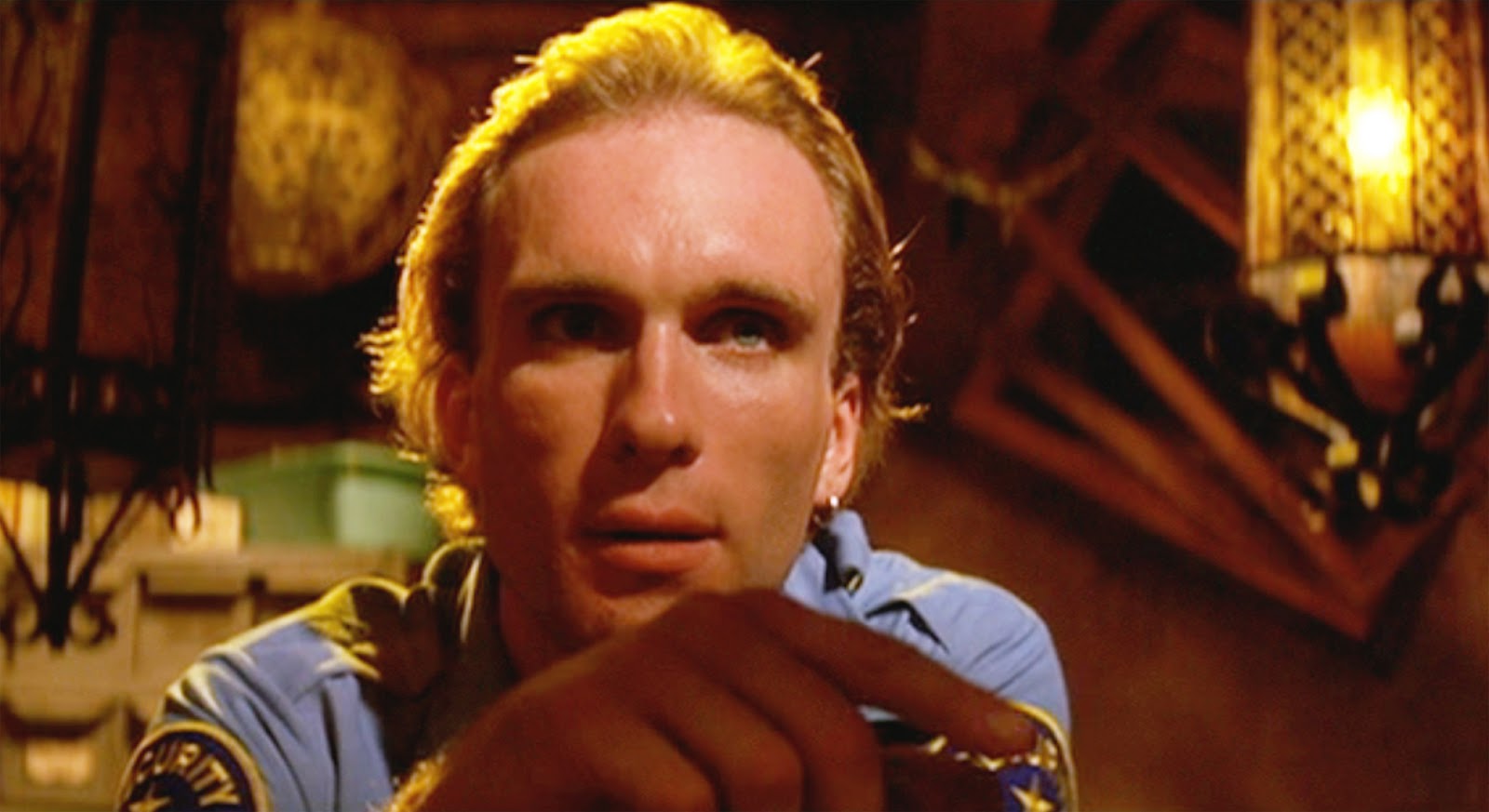
The nineties have been described as the last great decade in America; an overall more optimistic time before the September 11th terrorist attacks, invasion of Iraq and 2008 financial crash that have defined the 21st century thus far. The internet was a rising innovation treated with excitement and intrigue and Donald Trump wasn’t even the boss of his own television show yet, never mind of the country.
The nineties were also a great decade for cinema. In particular, the years 1994 and 1999 are often cited as two of the greatest years for film, producing such iconic films as Fight Club, The Shawshank Redemption, Magnolia, Eyes Wide Shut and Forrest Gump to name but a few – and there are still four other entries included on this list. It was the decade when post-modernism became the new normal and when it was more of a twist if your film didn’t, in fact, end in a twist. It produced directors that still cause a stir of excitement when they announce their next feature and actors that still dominate the box office to this day. If you had told anyone leaving a 1997 screening of Titanic that it would be almost two decades until Leonard DiCaprio won an Academy Award for acting, they would have called you a liar. Likewise, there are stars, such as Juliette Lewis and Alicia Silverstone, that are a crystallisation of the era – not particularly lasting culturally past the decade but acting as a perfect representation of their moments in time.
So, sit back, take a chill pill and enjoy the list, and if you don’t agree that the films on this list are da bomb then, like, whatever.
10. Se7en (David Fincher, 1995)
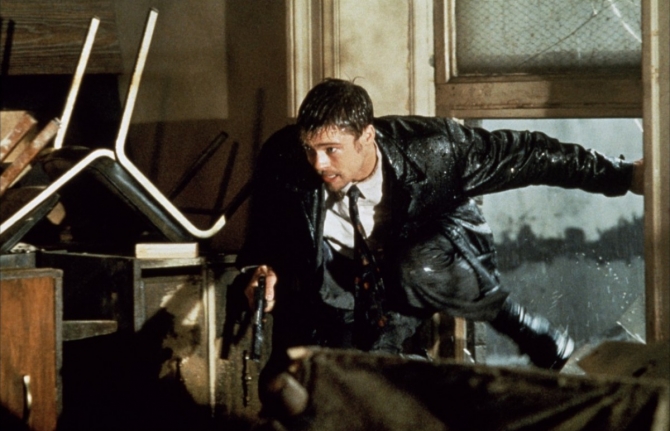
Following the relative disappointment of his 1992 debut Alien 3, many people had already begun to write-off David Fincher’s chances as a feature film director. Mostly known at the time for his stylish music videos for the likes of Madonna and Aerosmith, Fincher’s Hollywood debut flopped both critically and commercially after being entrusted with a $50 million budget – more than double the amount spent on the franchise’s two popular predecessors put together! Perturbed by this experience, Fincher opted towards a smaller-scale project for his sophomore effort with the 1995 psychological, mystery-thriller Se7en. Depressing and dark in every sense of the word, Se7en captured audience’s attention and set the precedent for what is expected from mystery crime-thrillers in both film and television to this day.
The influence of Se7en within the detective genre is ubiquitous across visual media. Immediately after its release, crime-thrillers began to imitate its grizzly, bleak atmosphere and nihilistic view of humanity; some even going so far as to cast Se7en’s own protagonist, Morgan Freeman, who subsequently starred in such films as Kiss the Girls (1997) and Along Came a Spider (2001). Meanwhile, Gregory Hoblit’s Fallen (1998) and Philip Noyce’s The Bone Collector (1999) are both cut from the same cloth as Se7en, starring down-trodden, pessimistic detectives being forced to participate in the disturbing games of a psychotic killer (both played this time by Denzel Washington).
The premise of murder being played as a twisted game has recurred throughout thriller and horror cinema since Se7en, notably in the popular Saw franchise, but none hit the impressive heights or sink to the dark lows as Se7en with the fervently religious John Doe killing his victims based on the seven deadly sins that they represent. Fincher’s masterpiece can even be seen in such crime television programmes as True Detective, Hannibal and Luther with their gritty, cinematic styles and long-form narratives that contain a multitude of twists and turns.
Perhaps the most overlooked effect of Se7en today is its casting of Brad Pitt in the biggest role of his career at that point as the over-eager, up-and-coming Detective David Mills. Pitt stated that he took the role to move on from the “pretty boy” idea that everybody seemed to have of him up to that point and prove that he could take on complex, flawed characters. With Se7en, Pitt transitioned from a heartthrob to a “real”, (still unbelievably good-looking) actor, going on to receive four Academy Award nominations for acting (winning one) and teaming up with Fincher again for his most iconic role as Tyler Durden in Fight Club (1999). No doubt Pitt was always destined to make it big in Hollywood but Se7en can be seen as the start of his career really kicking into gear.
9. Goodfellas (Martin Scorsese, 1990)
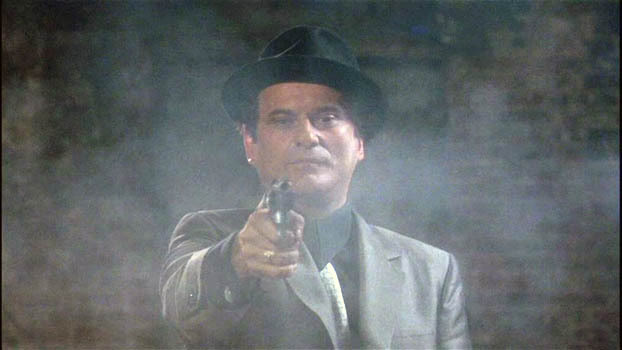
Since Martin Scorsese’s comments about his indifference towards superhero films, comic-book fans have hit back out at the director’s credibility by conjuring the myth that he only makes gangster films, and Goodfellas is largely the reason why. Goodfellas largely established the blueprint of the modern-day Italian-American gangster film through the stylish depiction of mob-life that on one hand shows the allure of the criminal lifestyle, while with the other revealing its grotesque violence. Scorsese established the now-common trope of Jekyll-and-Hyde type gangster, here played by Joe Pesci in an Academy Award winning performance, who one minute appears to be a likeable, witty friend and the next an uncontrollable, violent maniac.
Other than the lasting influence of Goodfellas within his own oeuvre in the fast-paced, explosive The Departed and equally profane, whirlwind rise-and-fall story of The Wolf of Wall Street, the most significant impact of Scorsese’s gangster masterpiece has been in television. David Chase has never hidden the influence of Goodfellas on his widely-celebrated television show The Sopranos, casting twenty-seven of the same cast members and creating a similar blend of black comedy and abhorrent violence that both respectively humanise and barbarise the characters.
The depiction of Italian-Americans as wisecracking but utterly unpredictable figures was continued in The Sopranos after being popularly established in Goodfellas, particularly by Joe Pesci’s “Funny How” rant which has been parodied endlessly but is still agonising to watch to this day. Meanwhile, Scorsese’s use of pop and rock music soundtracks over frenetic montages has largely become a staple of the gangster genre, evidenced in the gangster films of Guy Richie and the popular British television series Peaky Blinders.
Running the line between both glorification and condemnation of the criminal life, Scorsese paints a vivid picture of both the allure of mob life and the inherent risk that comes with that way of life. He presents the fun and games that come with the accruement of money and power while always acknowledging the ever-present danger that has to be lived with, whether it is from constant investigation from the authorities or the betrayal of someone that was believed to be an ally. Although none of this was ground-breaking for the genre, Scorsese presented it with a signature energy and flair that has made it not only one of the most influential gangster films of the 1990’s, but of all-time.
8. Terminator 2: Judgement Day (James Cameron, 1991)
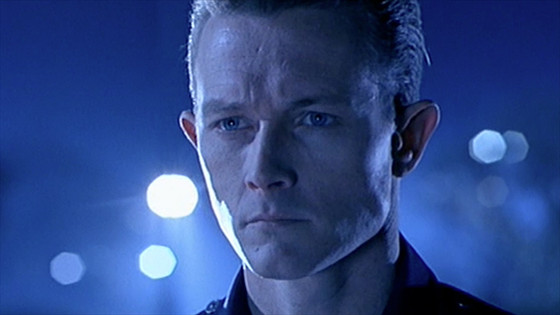
Arnold Schwarzenegger was arguably the biggest star in Hollywood in 1991, in both size and status. Armed with such films as Predator and Total Recall on his belt, it was no surprise that when James Cameron decided to make a sequel to his breakthrough hit, The Terminator, he deemed it essential to bring back the man who had played the eponymous character, despite his seeming demise. However, you still can’t imagine either of Schwarzenegger or Cameron knew what a mammoth blockbuster they had on their hands with Terminator 2: Judgement Day. Breaking both production cost and box office records while working with state-of-the-art CGI technology, T2 established the mould for the modern blockbuster that would shape the biggest hits of the 1990’s and beyond.
Schwarzenegger promised us in The Terminator that he’d be back and he was right, to an extent. Shifting from the role as antagonist sent back to kill Sarah Connor in the first movie, the T-800 is sent back in time to protect her son, future-resistance-leader John Connor, from the highly-advanced T-1000 model. The trope of the villain returning as a hero in the sequel may seem fairly common now – so much so that it has become a trope – but in 1991 it was truly an exciting twist. The idea has been used in almost every franchise of the last thirty years from Captain Barbosa in the Pirates of the Caribbean films to almost every character in the Fast and Furious franchise. Even the Marvel Cinematic Universe, which has dominated the box office for the last decade, has much to owe to T2 with the character progressions of Loki and, most recently, the protagonists of WandaVision.
The sheer scale of Judgement Day went on to shape the economic expectations of a blockbuster film, costing a record breaking $102 million dollars – over triple the budget of the average film at the time. This record would go on to be broken three more times during the 1990’s; twice by Cameron himself in between Kevin Costner’s Waterworld, which learnt the hard away that extortionate budgets and high expectations won’t always guarantee success. Much of T2’s vast budget was spent on the creation of computer-generated special-effects of which cinema had never seen before, particularly on the amorphous T-1000 which can melt and mould to its own will. The film solidified James Cameron as one of the biggest directors in the world and gave producers the confidence that they could entrust him with hundreds of millions of dollars, safe in the knowledge that he will reward them with a success.
Finally, Judgement Day established molten lava as the coolest and most 90’s way of concluding a film, the importance of which can never be understated.
7. The Sixth Sense (M. Night Shyamalan, 1999)
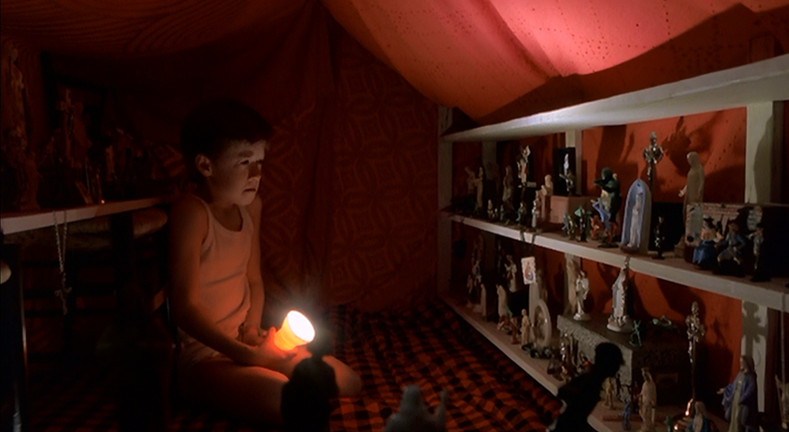
It goes without saying that this entry is going to have spoilers but, honestly, if you didn’t already know that The Sixth Sense has one of the most famous twists of all-time then you really haven’t been paying attention for the last twenty-two years. The majority of spectators enter the film already knowing what will be revealed during the course of the film and wait in baited breath for the line that they have heard parodied and referenced so many times before: “I see dead people”. But we don’t truly watch The Sixth Sense for the twist.
When watching in hindsight it is blindingly obvious that – look away now to avoid ruining the end if you have just finished a twenty years hermitage – Bruce Willis’ character, Malcolm Crowe, has been dead all along. It was likely clear to many when watching the film in its virginal state in 1999. We watch it because it is a lesson in good, effective storytelling about trauma and the different ways that people deal with it; whether they ignore it and try to carry on like nothing is wrong, acquiescingly accept help or actively go looking for it. The fact that Malcolm has always been dead is secondary to its enjoyment.
Of course, however, the most influential aspect of The Sixth Sense is the foundation of the “M. Night Shyamalan Twist”. Only since Alfred Hitchcock’s title of the “Master of Suspense” has a film director been so associated to a specific storytelling technique. Twist endings were already in vogue in the 1990’s; audiences had already been shocked by Kevin Spacey twice in 1995 in The Usual Suspects and Se7en before Shyamalan had even made an American picture, but it is really with M. Night that the trope has become synonymous. Most of Shyamalan’s best efforts have been when he has experimented with his storytelling and kept audiences on their toes in films such as The Village, Signs and his Eastrail 177 trilogy. Supernatural thrillers by other filmmakers quickly followed in The Sixth Sense’s suit with films like The Others and The Mist that similarly keep the audience guessing until the last minute about the true nature of what is going on.
The Sixth Sense also established Haley Joel Osment overnight as the brightest child acting star since Macauley Culkin. Acting with an emotional power way beyond his ten years, Osment received an Oscar nomination for his work in this film and would later go on to work under M. Night Shyamalan’s idol, Steven Spielberg, in 2001’s A.I. Artificial Intelligence. Now an adult, Osment continues acting, generally in smaller cameo roles for television comedies, which, although isn’t at the prestigious heights of his earlier work, he is clearly having a lot of fun doing in this period of his career.
6. Titanic (James Cameron, 1997)
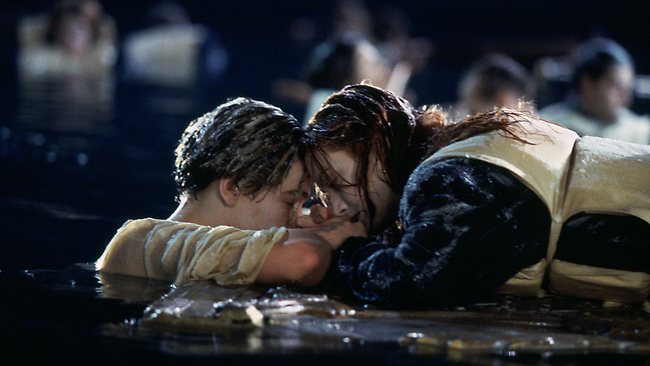
Like the boat on which it was based, Titanic was a film the size of which nobody had ever seen. Costing a record $200 million but taking in over $2 billion, Titanic was hailed as the most profitable movie of all time for over a decade until James Cameron, once again, dethroned one of his own films with 2009’s Avatar (which, after a recent re-release in China, has reclaimed its top spot from Avengers: Endgame). It’s only a matter of time until people stop referring to the “box office” and start calling it “James Cameron’s Playground”. Titanic and Avatar are both still the only two films in the top thirty highest-grossing films ever to not (yet) have any sequels or be part of a wider franchise and are only two of five films in general that have grossed over $2 billion.
The cultural impact of Titanic on cinema cannot be underemphasised. It established returning to see the same film in the cinema on multiple occasions as a norm and not just something that “nerds” and super-fans do, meaning much of its vast box-office was accrued from audiences returning to see the film again and again. Whereas most films would get $5 per person for seeing it in cinemas, some people were willing to pay $30, $35, even $40 dollars to be able to re-immerge themselves into Cameron’s dreamworld once again. Now, it is fairly common to hear that people have seen the latest Marvel film multiple times in its opening weekend. It also showed that blockbusters could appeal to all demographics by interweaving a sentimental, romantic storyline into an action-packed disaster film, further boosting its box-office pull. Michael Bay’s Pearl Harbor is a clear attempt to emulate the success of Titanic by making a big-budget, special-effects filled, tragi-romantic, historical, disaster epic, but some very, very specific formulas can only work once.
Perhaps the biggest effect of Titanic was the explosion of Leonardo DiCaprio and Kate Winslet into Hollywood stars. The romantic leads were both highly-acclaimed actors prior to 1997, both having already earned Oscar nominations for supporting roles, but Titanic rocketed them to global fame and adoration. DiCaprio became a heartthrob for teens and their mums everywhere for his portrayal of Jack while Winslet gained another Academy Award nomination with her portrayal of Rose. Since Titanic, the pair have worked under such directing talent as Martin Scorsese, Steven Spielberg and Sam Mendes and starred in some of the most significant films of the 21st century.